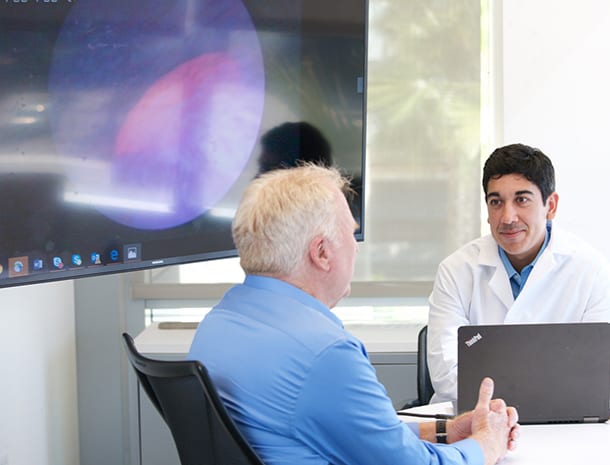If the bladder needs to be examined in detail, a urologist may perform a cystoscopy.
A cystoscopy is a procedure that involves accessing the bladder from the tube that transports urine (urethra) with a long tube with an attached lens called a cystoscope. Used for both diagnostic and treatment purposes, a cystoscopy may be performed by a urologist as an outpatient procedure with or without sedation or with a local anesthetic.
- In some situations, the procedure is done in a hospital under general anesthesia.
- The specific way a cystoscopy is performed will depend on the reason why it’s being done.
Reasons to Have a Cystoscopy
For investigative purposes, a cystoscopy may be done to determine the reason why a patient is having recurring urinary tract infections or bladder infections. The procedure may also be done to diagnose bladder diseases, bladder inflammation (cystitis), or enlarged prostate (benign prostatic hyperplasia). A cystoscopy might also be done to treat certain bladder problems, such as ones involving small tumors, with special instruments.
Preparation
Since the procedure isn’t usually done when a patient has an active infection, patients may be asked to take antibiotics prior to having a cystoscopy. In some cases, a urine test might be done prior to using the scope. For this reason, patients should wait to empty their bladder until their appointment unless told otherwise.

How It’s Done
An outpatient cystoscopy is usually done in a urologist’s office. Just prior to preparing to insert the scope, the bladder should be emptied. Patients lie down on a table, usually with feet in stirrups. Some type of sedation may be done, although this isn’t always necessary. Numbing jelly makes it easier to insert the flexible scope into the urethra.
The urethra and bladder are viewed in detail with real-time images captured by the tiny camera attached to the tube. The images, which can be magnified for increased clarity and detail, are viewed by the urologist on a monitor. A sterile solution may be used to inflate the bladder to improve the view.
If a cystoscopy is being done for treatment purposes, a larger scope is often used so instruments can be safely inserted. A larger scope is also used to take tissue samples.
After a Cystoscopy
Results may be discussed with a patient immediately after the procedure is completed. If a biopsy was taken, results won’t be known until lab tests are done. There may be some slight irritation following a cystoscopy. Staying hydrated and taking a warm bath may ease discomfort experienced following the procedure.
Use with a Ureteroscopy
A urologist sometimes performs a ureteroscopy at the same time a cystoscopy is done. It’s a similar process involving a smaller scope that’s used to view the tube that transports urine from the kidneys to the bladder. The two techniques are often combined when it’s discovered that a patient has stones in the lower part of the ureter. During an outpatient procedure, a tiny wire basket can be used to remove the stones.
A cystoscopy is just one of several diagnostic procedures a urologist may perform to determine what’s causing a patient’s symptoms. Oftentimes, what’s learned from a visual inspection of the bladder and nearby structures is combined with results from urine and blood tests and ultrasounds and other image tests. The goal is to develop a complete picture of what’s going on with the urinary system so an accurate diagnosis can be made to determine which treatments to recommend—some of which can also be performed with a cystoscope.
Treatment
Even though bedwetting may cause significant distress for the parents, no treatment is normally recommended when the child is still young. As children get older, there may be social pressures involved. Parents may be encouraged to try some behavioral or motivational methods to see if they can get the bedwetting under control. This could include a reward for staying dry a certain number of nights or the use of a bedwetting alarm. There are medicinal options as well if other methods do not work. These include desmopressin, which reduces urine output at night, and imaprim, which relaxes the bladder muscles and leads to lighter sleep. Punishing a child for a condition he or she cannot control is not recommended.




